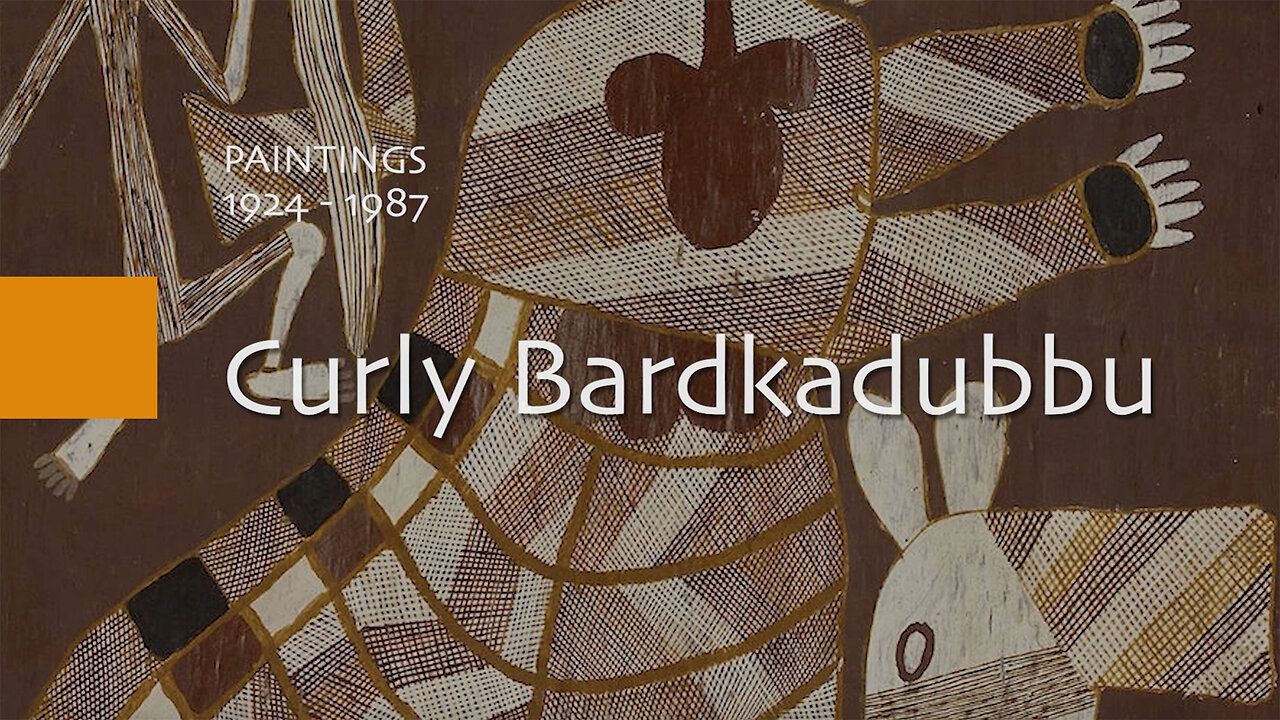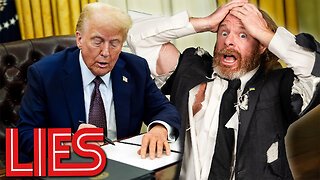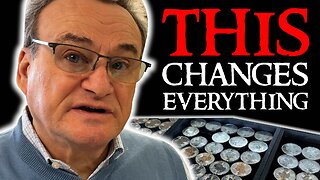Premium Only Content

Curly Bardkadubbu - Paintings (1924 - 1987)
Curly Bardkadubbu rose to prominence as a painter in the late 1970s. He was tutored by Yirawala in the early 1970s when they shared outstations at Table Hill and Marrkolidjban, which both men had helped to establish. Later, he moved to Namokardabu, also in the Liverpool River region.
Bardkadubbu’s work was selected for a number of major exhibitions in Australia and abroad, including: The Art of Aboriginal Australia, which toured North America from 1974 to 1976; and Aboriginal Art: The Continuing Tradition at the National Gallery of Australia in 1989. Bardkadubbu entered the first National Aboriginal Art Award, established by the Museum and Art Gallery of the Northern Territory in 1984.
Bardkadubbu Crocodiles
The treatment of the infill of his crocodile is the same used on Mardayin ceremonial objects. Mardayin objects decorated with the same bright patterns of crosshatching and dotted lines. Mardayin objects are secret sacred. The use of the same design within the crocodile, therefore, shows the interconnection of the crocodile and the Mardayin ceremony.
Curlys traditional lands of the Born clan lie next to the Liverpool River mouth. His traditional country importantly being well known for its abundance of dangerous crocodiles.
A crocodiles often has a massive twisting body form and sharp-toothed jaws. His paintings similarly conveying a crocodiles dangerous power.
Bardkadubbu painted the image of this crocodile many times in his painting career. The estuarine crocodile or Namanjwarre is the protector of the sacred objects of the Mardayin ceremony. Firstly, the Mardayin ceremony is an important rite of passage for Kuninjku language speakers of western Arnhem Land. Secondly, the crocodile (Namanjwarre) would devour anyone who transgressed from the correct ceremonial protocol.
The art style of Culy Bardkadubbu
Curly Bardkadubbu started painting far later than early artists like Mick Kubarrku or Dick Murramurra. Consequently for this reason most of his barks tend to be large. His barks are often up to a meter in length. He painted animals like the Barramundi, Crocodiles, and Kangaroo.
He did occasionally paint spirits skeletons and the rainbow serpent. Having Yirawala as a mentor it is not surprising that there are some superficial similarities of their works. Curly animals however tend to be fatter and less dynamic than Yirawala. His artworks are sometimes mistaken for those of David Milaybuma. Both artists had similar great infill line work using intense rarrk.
The innovative treatment of the infill of the figure in his painting is the same used in Mardayin ceremonial objects. Mardayin objects are covered with the same bright patterns of crosshatching and dotted lines. The use of the same design within the crocodile shows the inter-relationship of the crocodile and the Mardayin ceremony.
-
 LIVE
LIVE
Dr Disrespect
6 hours ago🔴LIVE - DR DISRESPECT - TRIPLE THREAT CHALLENGE - NOBODY STOPS US
3,630 watching -
 1:54:45
1:54:45
Twins Pod
3 hours agoMAGA P***star is HATED By Conservatives AND Leftists... | Twins Pod - Episode 49 - Brandi Love
17.2K14 -
 UPCOMING
UPCOMING
Bare Knuckle Fighting Championship
1 day agoBKFC KNUCKLEMANIA V PHILADELPHIA Weigh-In | LIVE!
865 -
 LIVE
LIVE
Scammer Payback
2 hours agoCalling Scammers Live
257 watching -
 1:10:38
1:10:38
Awaken With JP
3 hours agoJFK Files to be Released! Trump’s Boss Move - LIES Ep 75
36K34 -
 1:50:19
1:50:19
The Quartering
4 hours agoTrump NUKES The Deepstate, BANS Trans In Military & Terminates Dr. Fauci Protections!
62.3K57 -
 58:24
58:24
Uncommon Sense In Current Times
20 hours agoUnbreakable: How Jeff Younger Stands Firm Against Courts, Government, and Personal Attacks
1.71K -
 1:56:01
1:56:01
Nina Infinity
22 hours agoGOOD NEWS - Infinite Hope # 219 | Birthday Stream with Guests!
12.7K -
 15:08
15:08
Silver Dragons
1 day agoWhat Will the TRUMP Tariffs Will Do to Silver & Gold Price?
16K7 -
 19:37
19:37
Neil McCoy-Ward
7 hours ago🚨 The CRAZIEST Moments From Davos 2025... ! 🔥
14.4K5